Related Research Articles
A music video is a video that integrates a song or an album with imagery that is produced for promotional or musical artistic purposes. Modern music videos are primarily made and used as a music marketing device intended to promote the sale of music recordings. These videos are typically shown on music television and on streaming video sites like YouTube, or more rarely shown theatrically. They can be commercially issued on home video, either as video albums or video singles. The format has been described by various terms including "illustrated song", "filmed insert", "promotional (promo) film", "promotional clip", "promotional video", "song video", "song clip", "film clip", "video clip", or simply "video".

Broken is the first extended play (EP) and second major release by the American industrial rock band Nine Inch Nails. It was released on September 22, 1992, by Nothing, TVT, and Interscope Records. The EP was produced by frontman Trent Reznor and Flood.

"Head Like a Hole" is a song by the American industrial rock band Nine Inch Nails, released as the second single from the group's debut album, Pretty Hate Machine. It enjoyed heavy rotation on the radio at the time of its release, eventually reaching number 9 on Billboard's Bubbling Under Hot 100 chart.

The Music Factory (TMF) was an originally Dutch brand of television and radio channels operated focusing on pop music. It was similar to the American MTV which took over TMF in 2001.
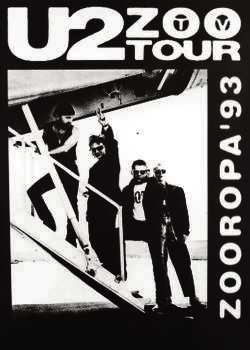
The Zoo TV Tour was a worldwide concert tour by rock band U2. Staged in support of their 1991 album Achtung Baby, the tour visited arenas and stadiums from 1992 to 1993. It was intended to mirror the group's new musical direction on Achtung Baby. In contrast to U2's austere stage setups from previous tours, the Zoo TV Tour was an elaborately staged multimedia spectacle, satirising television and media oversaturation by attempting to instill "sensory overload" in its audience. To escape their reputation for being earnest and over-serious, U2 embraced a more lighthearted and self-deprecating image on tour. Zoo TV and Achtung Baby were central to the group's 1990s reinvention.

"Breaking Up the Girl" is a 2001 alternative rock song written, recorded and produced by the band Garbage for their third studio album Beautiful Garbage. In North America, it was serviced to alternative radio as the second single from the album.
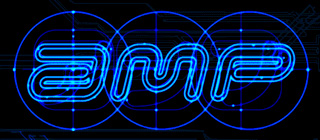
Amp is a music video program on MTV that aired from 1996 to 2001. It was aimed at the electronic music and rave crowd and was responsible for exposing many electronica acts to the mainstream. When co-creator Todd Mueller left the show in 1998, it was redubbed Amp 2.0. The show aired some 46 episodes in total over its 6-year run. In its final two years, reruns were usually shown from earlier years. Amp's time slot was moved around quite a bit, but the show usually aired late at night or in the early morning hours on the weekend. Because of this late night time slot, the show developed a small but cult like following. A few online groups formed after the show's demise to ask MTV to bring the show back and air it during normal hours, but MTV never responded to the requests.

"Numb" is a song by rock band U2. It is the third track from their 1993 album Zooropa and was released in June 1993 as the album's first single. The song features a monotonous mantra of "don't" commands spoken by guitarist the Edge amidst a backdrop of various sound effects and samples. The noisy composition and lyrical concept for "Numb" were inspired by the theme of sensory overload, which had prominently been incorporated into the Zoo TV Tour. Lead singer Bono and drummer Larry Mullen Jr. provided backing vocals on the track.
TMF was a 24-hour music channel operated by Viacom International Media Networks in the Netherlands. The channel was previously in every standard TV package, but it ceased operating on 1 September 2011. The channels operations were based in Amsterdam. The channel was previously known as TMF6 and TMF9.
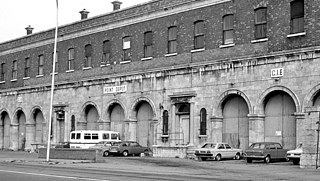
The Point Theatre (sometimes referred to as the Point Depot or simply as the Point) was a concert and events venue in Dublin, Ireland, that operated from 1988 to 2007, visited by in excess of 2 million people. It was located on the North Wall Quay of the River Liffey, amongst the Dublin Docklands. The Point was closed in the middle of 2007 for a major redevelopment and underwent a rebranding as The O2 in July 2008.
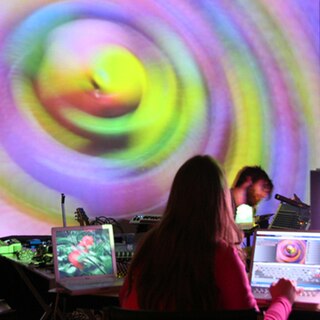
VJing is a broad designation for realtime visual performance. Characteristics of VJing are the creation or manipulation of imagery in realtime through technological mediation and for an audience, in synchronization to music. VJing often takes place at events such as concerts, nightclubs, music festivals and sometimes in combination with other performative arts. This results in a live multimedia performance that can include music, actors and dancers. The term VJing became popular in its association with MTV's Video Jockey but its origins date back to the New York club scene of the 1970s. In both situations VJing is the manipulation or selection of visuals, the same way DJing is a selection and manipulation of audio.

Telecommunication Breakdown is an album by Emergency Broadcast Network. It was released in 1995 by TVT Records. The CD includes three video tracks in addition to the audio, and a floppy disc includes an interactive press kit.

Mortal Kombat: More Kombat is a compilation album featuring primarily exclusive music from a number of metal, industrial and electronica bands inspired by the first Mortal Kombat film. It is not an actual soundtrack to the movie, however. Cubanate's "Oxyacetylene" had already been released as a single from their 1994 album Cyberia, and would later be included in instrumental form in the soundtrack for non-Japanese releases of Gran Turismo. Babylon Zoo's "Spaceman" had already been released as a single in 1995. Alien Factory's "Higher" later turned up in the second movie, Mortal Kombat Annihilation, and Juno Reactor's "The Journey Kontinues" was later released under the title "Biot Messiah" on the single "God Is God" (1997). Psykosonik's "It Has Begun" and Sister Machine Gun's "Deeper Down" appeared in the animated series Mortal Kombat: Defenders of the Realm. Track 16 is exclusive to the cassette release and was taken from the EBN's album Telecommunication Breakdown.

VuJak is an early video sampler, a VJ remix and mashup tool created in 1992 by Brian Kane, Lisa Eisenpresser, and Jay Haynes. The original name of the project was Mideo, but it was later changed to VuJak.
The 2000 MTV Video Music Awards aired live on September 7, 2000, honoring the best music videos from June 12, 1999, to June 9, 2000. The show was hosted by Marlon and Shawn Wayans at Radio City Music Hall in New York City.
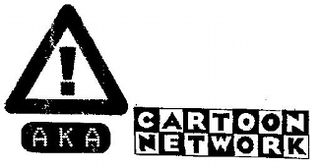
AKA Cartoon Network was a slot in the Cartoon Network weekday evening schedule from 1999 to 2000, between 7 and 9pm on weekday evenings. The slot consisted of repeated shows such as Space Ghost Coast to Coast, Tom and Jerry, Looney Tunes and Cow and Chicken. In addition, the slot included an original show called Cult Toons, broadcast only on Friday evenings.
Scratch video was a British video art movement that emerged in the early to mid-1980s. It was characterised by the use of found footage, fast cutting, and multi-layered rhythms. As a form of outsider art, it challenged many of the establishment assumptions of broadcast television, as well of those of gallery-bound video art.

"Bad Girl" is a song recorded by American girl group Danity Kane. It was written by Mary Brown, Jim Beanz, Devin "DLP" Parker, Danja and Missy Elliott. Produced by Danja and featuring guest vocals by Elliott, the song was released by Bad Boy Records on July 1, 2008 as the second and final single from the band's second studio album, Welcome to the Dollhouse (2008). It peaked at number 85 on the US Billboard Pop 100, marking the last release from the group before their early 2009 breakup.

U2 Live at Red Rocks: Under a Blood Red Sky is a concert film by Irish rock band U2. It was recorded on 5 June 1983 at Red Rocks Amphitheatre in Colorado, United States, on the group's War Tour. Originally released in 1984 on videocassette, U2 Live at Red Rocks was the band's first video release. It accompanied a 1983 live album entitled Under a Blood Red Sky, on which two tracks from the film appear. The video was directed by Gavin Taylor and produced by Rick Wurpel and Doug Stewart.
Shredder Orpheus is a 1989 film by Robert McGinley that has later become a cult classic, based on the myth of Orpheus and Eurydice. It was Amy Denio's film debut.
References
- ↑ "Emergency Broadcast Network". Allmusic . Retrieved 2015-06-14.
- 1 2 3 Kenny, Glenn (1995-08-18). "Emergency Broadcast Network's mutated ads". Entertainment Weekly . Archived from the original on 2017-11-06. Retrieved 2016-12-06.
- ↑ Gillen, Marilyn A. (March 11, 1995). "EBN Expands The Multimedia Envelope". Billboard . Vol. 197, no. 10. p. 60.
- 1 2 Nalepa, Steve (2007-08-28). "Made On Earth — Grand Master Video". Make . Archived from the original on 2015-06-15. Retrieved 2015-06-14.
- ↑ Stokes, Niall (2005). U2: Into the Heart: The Stories Behind Every Song. Da Capo Press. p. 206. ISBN 9781560257653.
- ↑ Atwood, Brett (April 12, 1997). "U2's ZooTV Finds A Home On MTV". Billboard . Vol. 109, no. 15. p. 75.
- ↑ Stathis, Lou (March 1993). "This Is Only A Test". Spin . 8 (12): 26.
- ↑ Frere-Jones, Sasha (February 1995). "Emergency Broadcast Network: Telecommunication Breakdown TVT". CMJ (18): 21.
- ↑ emn_agent_g. "EBN Theme, Get Down - MedicineFIlms".
- ↑ Kreth, Will (1993-02-01). "Scratch Video". Wired.com . Retrieved 2016-12-06.
- ↑ Bessman, Jim (May 22, 1995). "Interactivity Spurs Different Views". Billboard . Vol. 105, no. 21. p. 76.
- ↑ Willis, Holly (2005). New Digital Cinema: Reinventing the Moving Image. Wallflower Press. p. 70. ISBN 9781904764250.
- ↑ Russell, Deborah (January 14, 1995). "VuJack Heralds New Era Of Video Sampling". Billboard . Vol. 107, no. 2. p. 32.
- ↑ Gottlieb, Lori; Jacobs, Jesse (2002). Inside the Cult of Kibu: And Other Tales of the Millennial Gold Rush. Da Capo Press. p. 260. ISBN 9780738206912.
- ↑ LaPorte, Nicole (2003-08-18). "Video artist in at Outpost". Variety . Retrieved 2015-06-14.
- ↑ Hood, John (2010-04-01). "Head Spins: Tom Laroc". Miami New Times . Retrieved 2015-06-14.